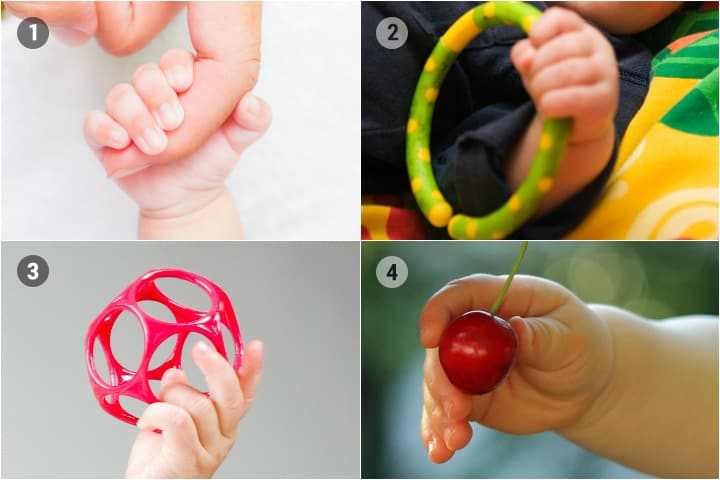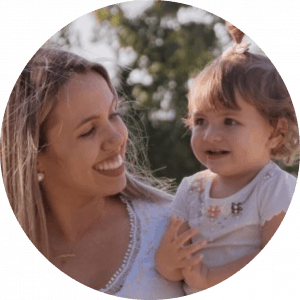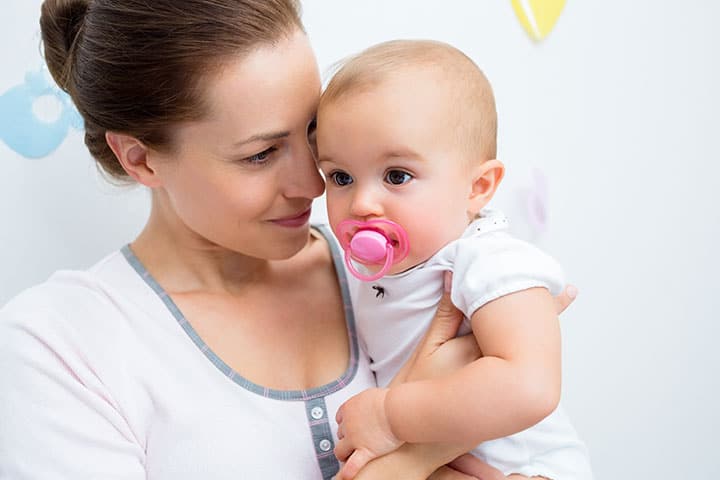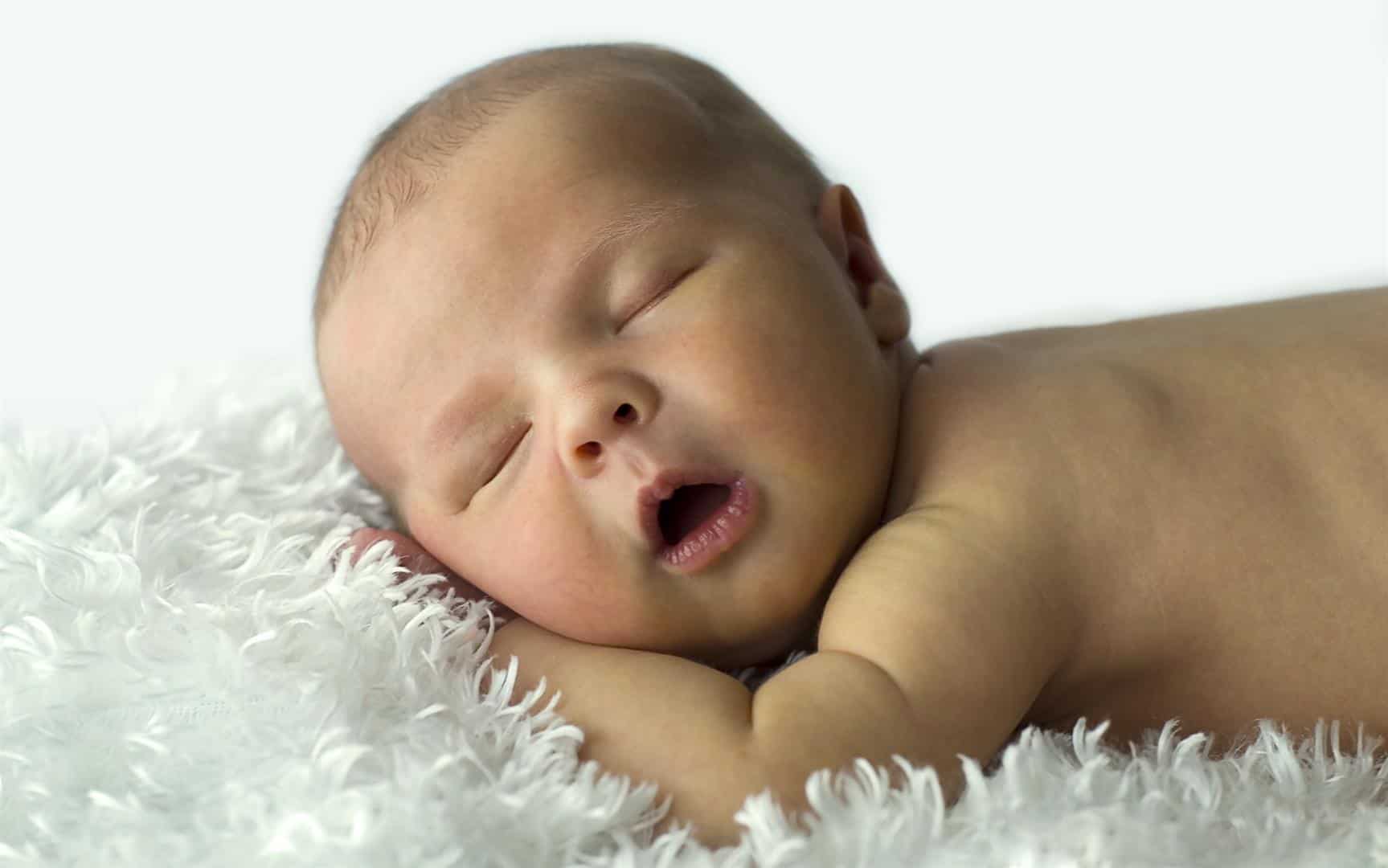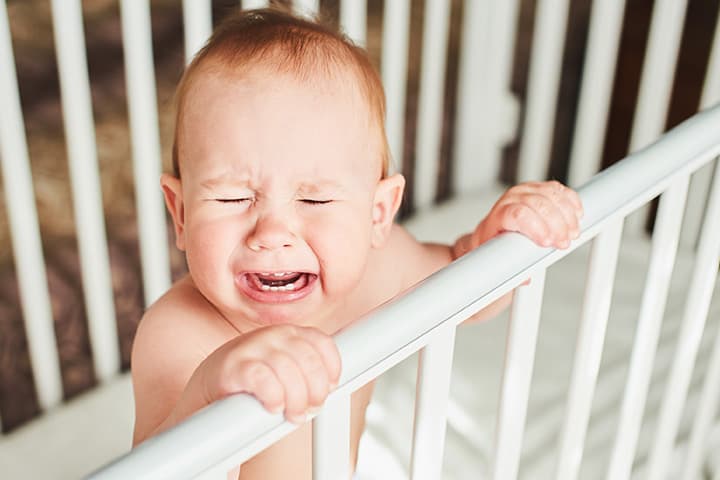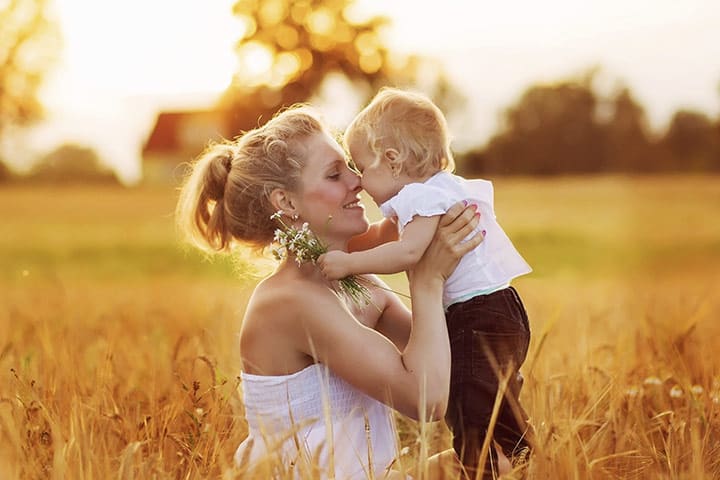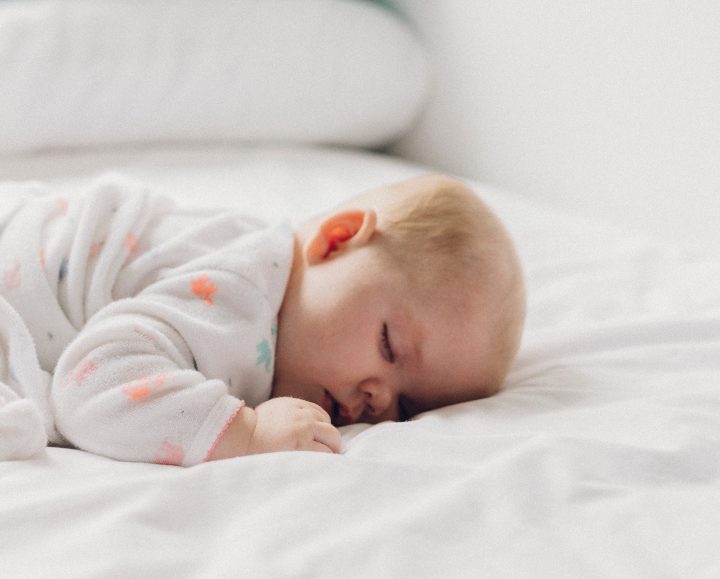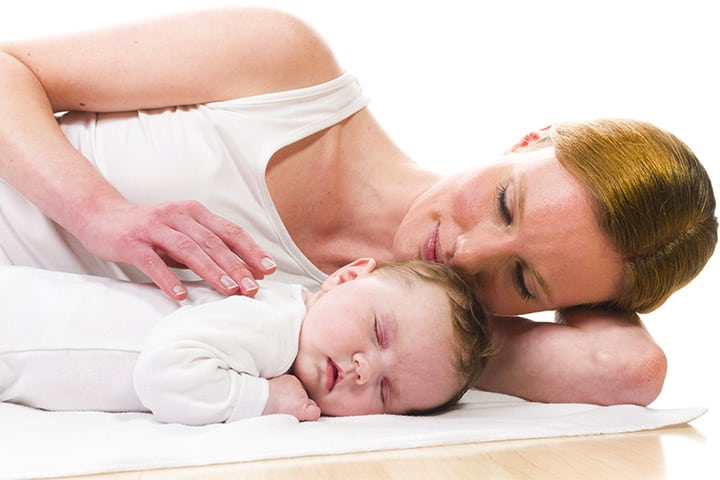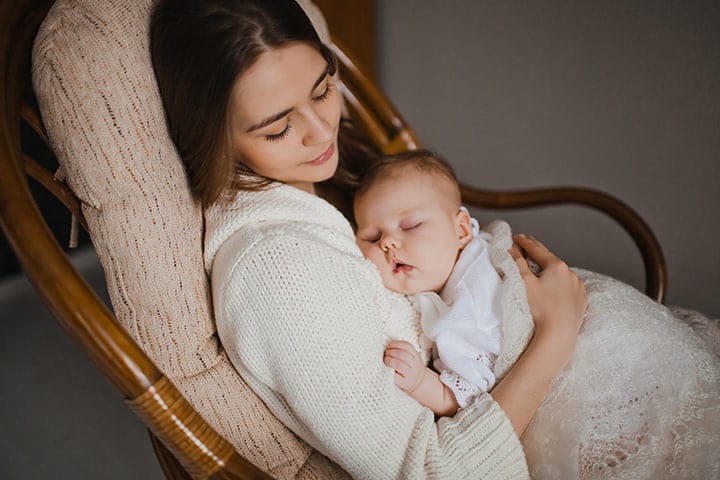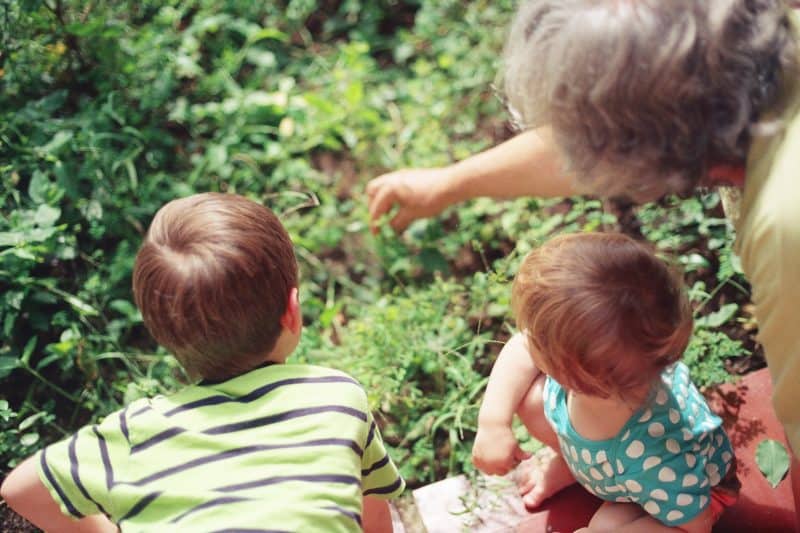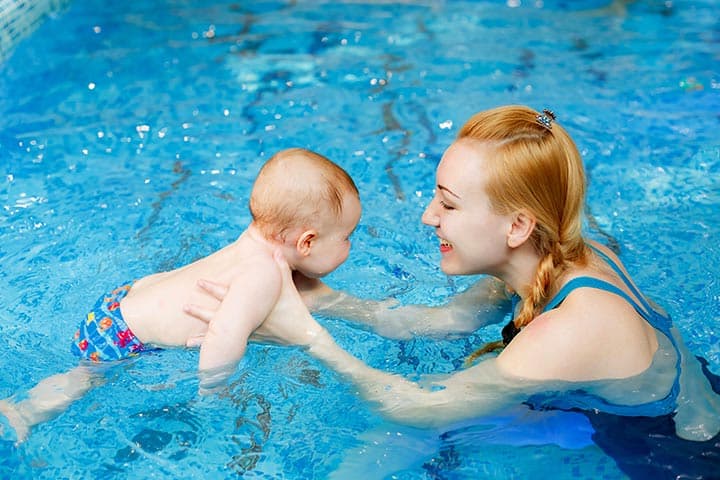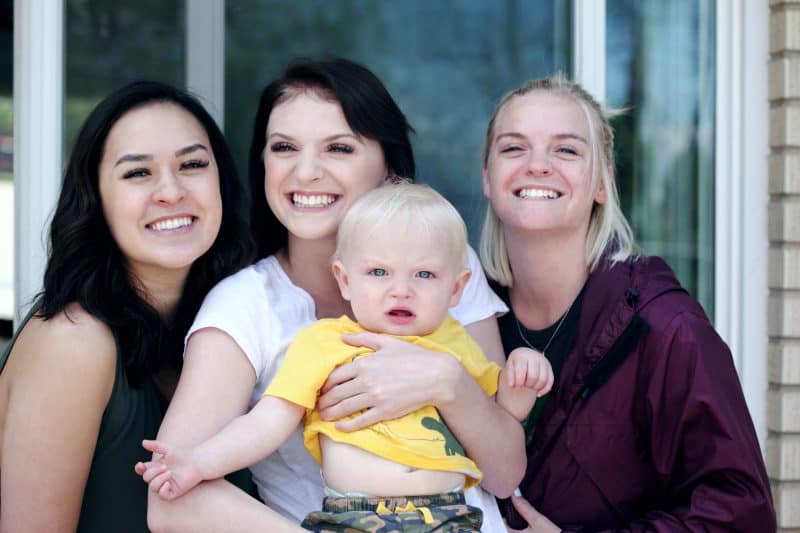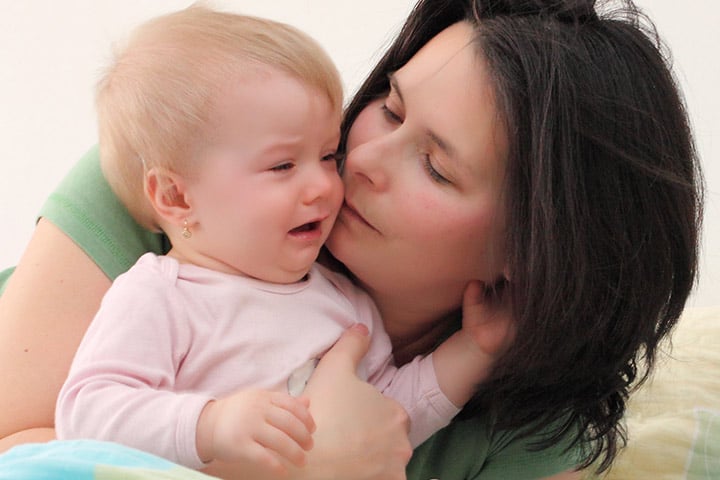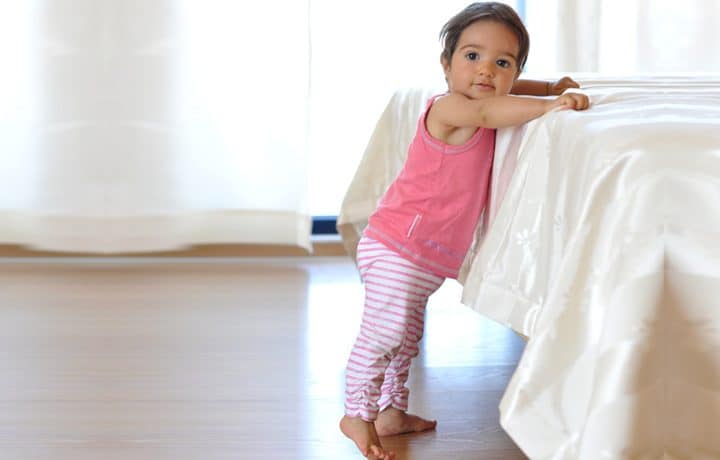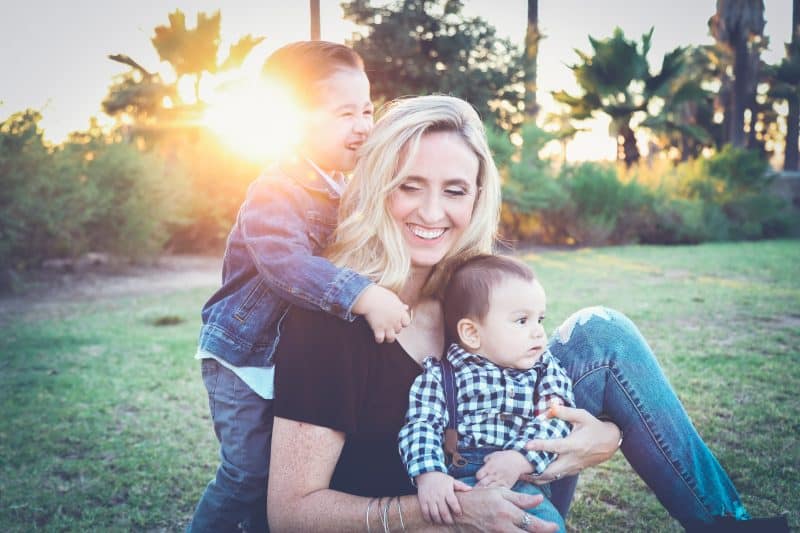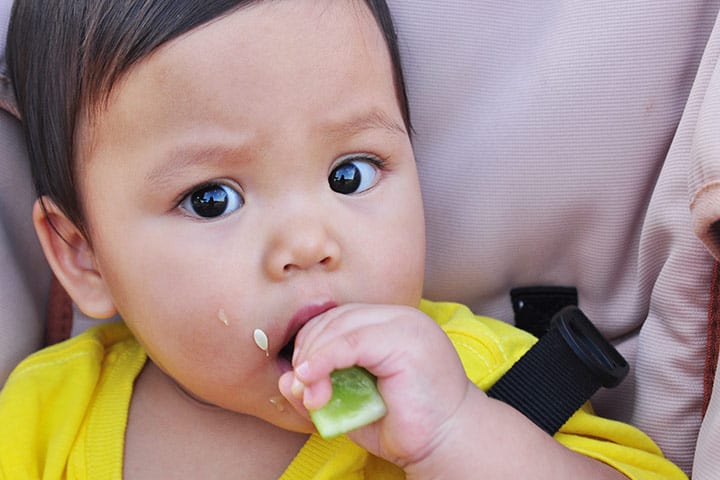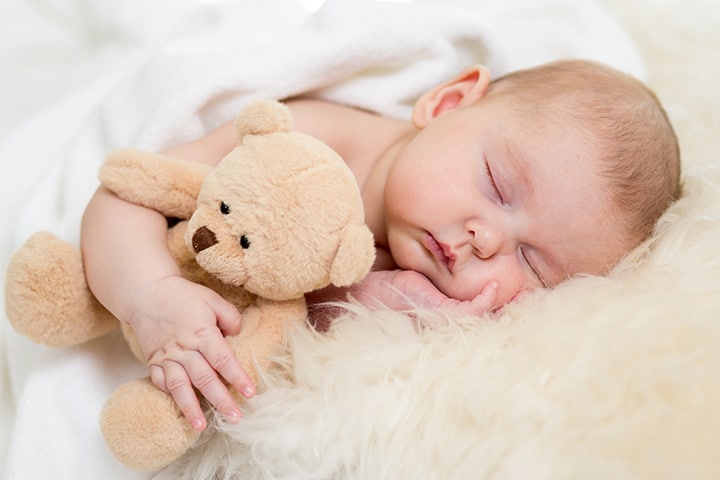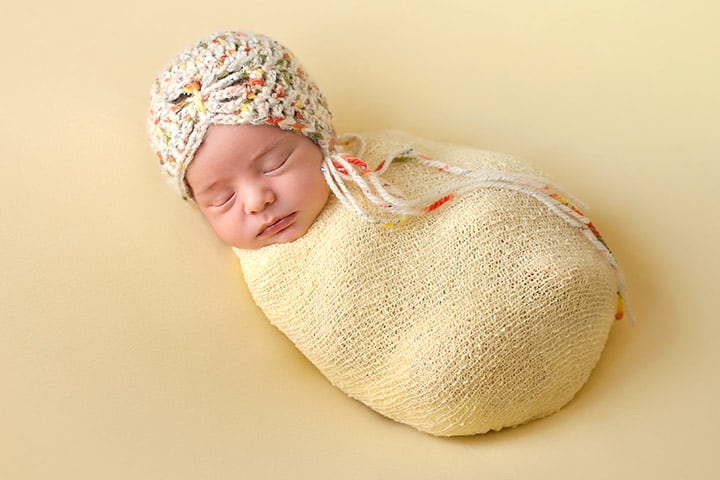It is thrilling to see your baby accomplish developmental milestones! While most parents look for common ones like ‘rolling over’ or ‘walking’, a multitude of them are cited by the American Academy of Pediatrics. Pincer grasp is one of them.
According to Claire Lerner, parenting resources director at Zero to Three, a national nonprofit organization promoting healthy development for infants and toddlers, “Getting the pincer grasp is one of the biggest keys to independence. Eventually, a child will use this grasp to do essential things like feed and dress herself and brush her teeth.” MomJunction tells you how babies develop pincer grasp, and the activities and toys you can use to develop this skill in them.
What Is Pincer Grasp?
A pincer grasp is a kind of finger-hold that your baby will start developing between 9 and 12 months of age. She will use the index finger and thumb together to squeeze an object before grasping and picking it up. It helps your little one understand how to pick up things. Once she learns to use pincer grasp or pincer grip, she can successfully feed herself with fingers and can use a spoon. Gradually, the skills refine, and the little one learns to pick things with both hands.
How Do Babies Develop Pincer Grasp?
Babies can grasp things right from the time of birth. It is a reflex action in the first few months, called palmar grasp. The baby learns to hold anything in the palm by wrapping her fingers and thumb around it from one side (1). The palmar grasp gradually develops into pincer grasp, which is a developmental milestone. Here is how she develops her grasping skills through the months:
One-Two Months
During the first two months, the little one keeps her hands clenched in a fist. She can curl her tiny fingers around yours as an instinct, to hold on to them tightly. This reflex slows down by the time she is three months old.
Three-Four Months
Now, the hand-eye coordination begins to develop, where she attempts to notice things and might even try to reach out for them. In the three-four month period, she can hold a toy or block. She may not grasp accurately but can bat. She may hold a rattle for a few seconds and can rake an object towards her.
Five-Six Months
By now, the palmar grasp becomes a voluntary skill. Five or six-month-old babies intentionally grip objects with this grasp. Your little angel attempts to pick an object, cover it with her hand, and squeeze into her fist. It includes the usage of the whole hand to grasp, pick, and hold an object. Once she masters in clutching larger objects in her palm, she will concentrate on gaining adeptness in her fingers in the coming months.
Seven-Nine Months
Between seven and nine months, your baby can use all the fingers and thumb to grasp a small toy. At nine months, she will be able to pass an object from one hand to the other. Eventually, the baby learns pincer grasp between nine and 12 months, in a direct route for picking things. It is a way of getting the index finger and thumb together as if to pinch.
Based on how well the baby can pick things using a pincer grasp, it is classified into two stages.
Inferior or crude pincer grasp: It is an initial stage where the baby uses the pads of the index finger and thumb to pick little things. It may last for 10 months from when the reflex begins.
Superior or neat pincer grasp: It is an advanced stage of the reflex, also called as fine pincer grasp, developed between 10 and 12 months. The baby can pick things using the tip of the index finger and thumb. Next, the baby will develop the lateral pincer grasp to hold an object between the side of the index finger’s mid-joint and the thumb.
Help your baby develop a more mature pincer grasp by trying the below-listed activities.
Pincer Grasp Activities To Help Your Babies
Encouraging the pincer grasp skill simply means allowing the little explorer to investigate a lot with fingers. Let her enjoy touching and manipulating toys or household objects.
Finger Foods: Allow your little one to try a few cheerios or soft finger foods such as cooked carrots or peas on her high chair. Place small food items like cheerios, raisins, etc., inside an ice cube tray compartments and challenge her to pick them using pincer grasp. Use tiny sock gloves which oblige her to use just the index finger and thumb. Keep away hard foods like raw carrots and nuts to avoid choking hazard.
Strengthen The Index Finger: Pointing or poking some object with the index finger is the initial stage of the pincer grasp.
- Encourage your little one to point out pictures in books or body parts.
- Let her push the play dough to make holes in it or push foods in her tray.
- Allow her to push buttons.
- Let her pull something out of your pocket and push something inside it.
- Let her enjoy pulling out tissues from a box.
Practice With Household Objects: The little one needs ample of practice.
- Simple kitchen items such as measuring cups and spoons, bowls, etc., are always a means of fun learning while playing.
- Allow the baby to drop objects into containers and help her learn to separate them. This aids muscle movements of the hand, wrist, and individual fingers.
- Stick a paper to the table or on the floor and allow your baby to scribble with crayons or a marker. Do not worry if she cannot hold it steadily. She is still in the process of developing her fine motor skills.
Toys To Encourage Babies In Using Pincer Grasp
- Toys or objects such as dials to turn, switches to flip, can be good pincer grasp toys, which help babies in developing skills needed to get the pincer grasp.
- Playing with toys, which need squeezing or pulling apart will be helpful. Balls of varying sizes and textures encourage the baby to push or squeeze. They help in the development of the infant’s hand muscles and the ability to co-ordinate them.
- Allow the baby to play with toys like stacking rings and alphabet blocks of varying shapes, sizes, and textures. Let her pick them, throw, pick again, stack, or knock them down. She may even clap them together.
Be extra careful. Keep choking hazards out of your little angel’s reach. Present one or two items at a time for practice. Too many things may tempt her to use ‘less mature raking grasp’, as she attempts to pick all of them at once, using all the fingers.
What Happens After The Pincer Grasp Development?
Once the pincer grasp is developed, grasping becomes precise. Babies explore more by shaking, moving, throwing, and rotating. Mouth is no longer their primary sensory preceptor. They use both the hands to determine the size, hardness, texture, weight, and other properties.
Pincer grasp helps in later activities such as writing, coloring with crayons, cutting with scissors, and so on. The child’s preference for using left or right hand emerges slowly, although it can completely develop by two or three years.
When Should You Worry?
Every baby reaches milestones at his or her own pace. If your baby is not catching up or attempting for a pincer grasp, she is probably not ready for it yet. Give more time and do not pressurize the little one. While achieving milestones is important, understanding a baby’s developmental stages is equally important! Consider it as a matter of concern if your child is not using the pincer grasp by 12 months. Get an evaluation done to assess her fine motor skills and check if she needs an occupational therapy.
Note that premature babies reach milestones a bit later than their peers. Other possible causes of delayed or absent pincer grasp can be genetic disorders like cerebral palsy and autism. Check with the pediatrician to clarify your worries or doubts.
Hope our post helped you learn about pincer grasp. Tell us when your baby began trying the pincer grasp. Did you attempt any particular activity to encourage your baby or take any measures to ensure that your baby had enough chances to practice? Share your experiences in the comments section below to help other moms.

